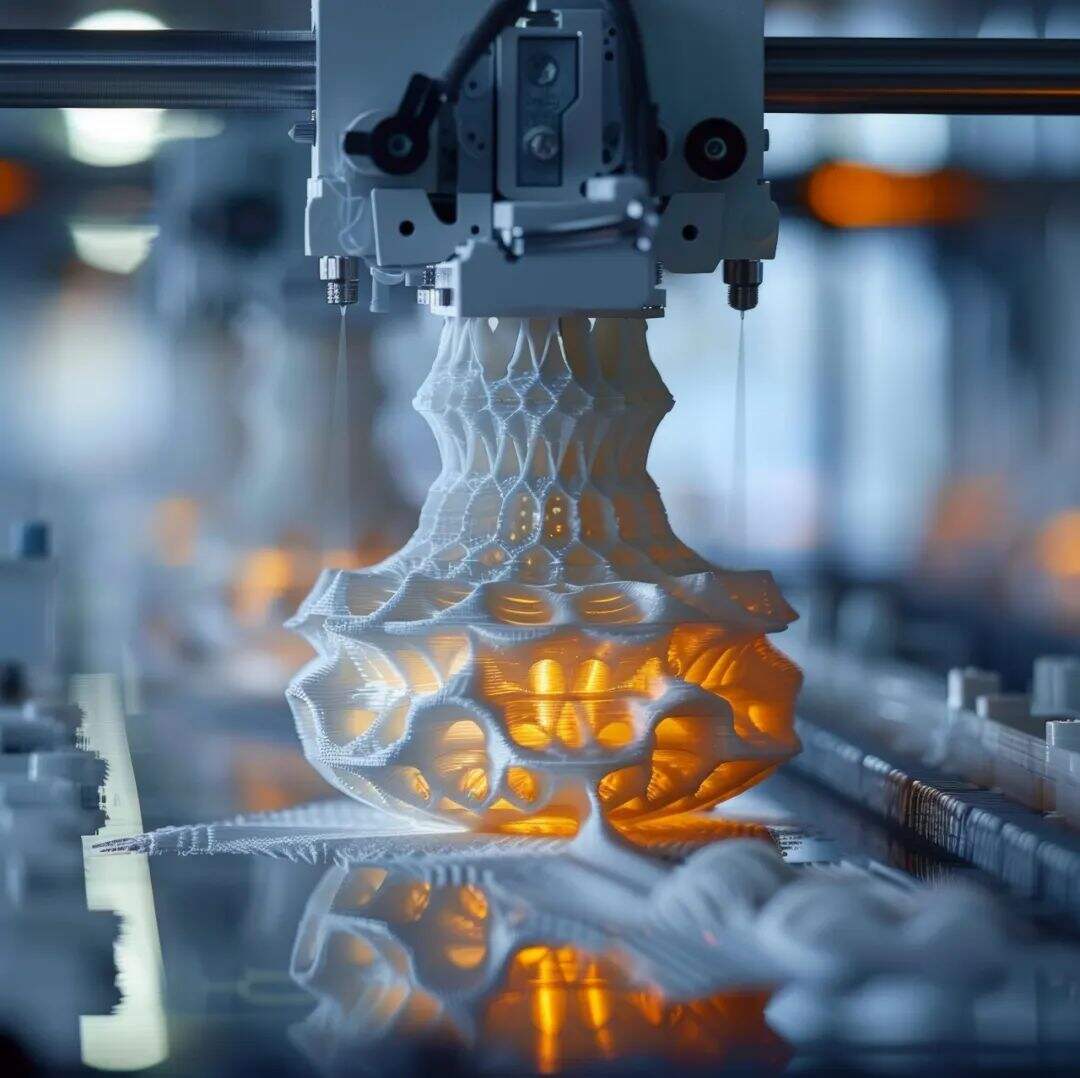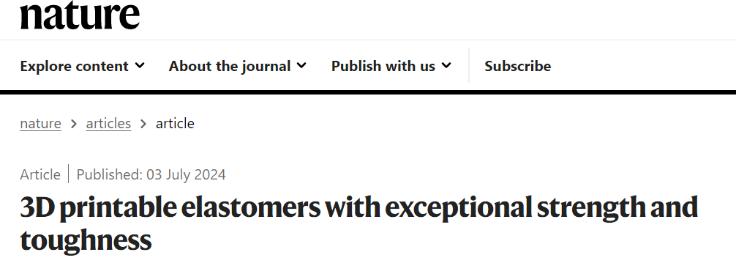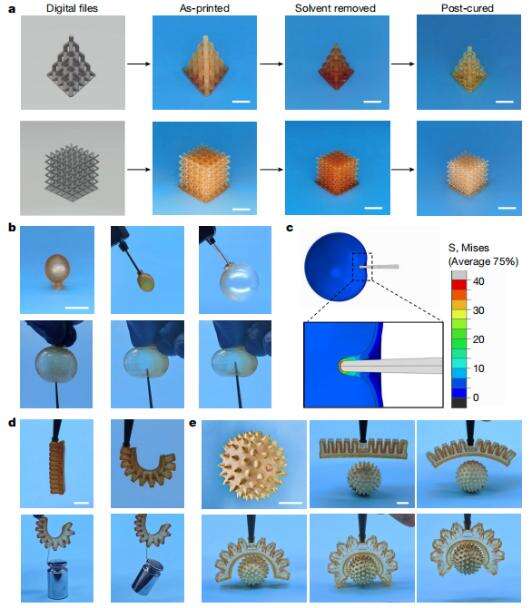With the rapid development of science and technology today, 3D printing technology has spread across all walks of life like a strong east wind. From complex and precise mechanical parts to lifelike product models, from fantastic architectural prototypes to personalized daily necessities, 3D printing technology, with its endless creativity and sufficient flexibility, has brought imagination into reality, making people's lives more convenient while also bringing us surprises.
Working principle of 3D printing technology
3D printing technology, also known as additive manufacturing technology, is an innovative production method that builds three-dimensional entities by stacking materials layer by layer. Its principle is similar to that of building a brick house, which can be simply summarized as "layered manufacturing, layer by layer stacking".
The 3D printing process is not complicated. First, a digital model is created or obtained through computer-aided design software, and then the model is cut into a series of very thin cross-sectional layers (i.e. slices), and the thickness of each slice is usually between tens of microns and hundreds of microns. Then, based on these slice information, the 3D printer builds the final object layer by layer through specific technology and materials.
3D printing processes include fused deposition modeling (FDM), photo-stereolithography 3D printing (SLA, DLP, LCD), selective laser sintering (SLS), selective laser melting (SLM), stereo inkjet printing (3DP), and layer-by-layer manufacturing (LOM).

Fused deposition modeling (FDM) is a process in which filamentary thermoplastic materials are heated and melted through a nozzle, deposited layer by layer on a platform, and finally solidified into a three-dimensional object. This technology often uses thermoplastic materials as raw materials, such as acrylonitrile-butadiene-styrene copolymer (ABS), polylactic acid (PLA), etc. It has low equipment requirements and is easy to operate, suitable for individuals and small studios. The "radish knife" and "telescopic sword" that have been popular in the toy market recently are made in this way.
Stereolithography 3D printing (SLA, DLP, LCD) uses light of a specific band and shape to irradiate photosensitive resin, and the photosensitive resin is cured layer by layer to generate objects of the desired shape. This technology has high molding accuracy and smooth surface, and is suitable for making fine models and small parts.
Selective laser sintering (SLS) uses a laser beam to scan powder materials to melt and bond them together, accumulating layer by layer into a three-dimensional object. This technology uses powder as raw material (such as nylon, metal powder, ceramic powder, etc.), has high molding accuracy, and is suitable for manufacturing functional parts with complex structures.
Selective laser melting (SLM) has higher laser energy, similar to selective laser sintering (SLS), and can completely melt metal powder to achieve rapid prototyping of metal parts. This technology often uses metal powder (such as titanium alloy, stainless steel, etc.) as raw materials, can print high-strength, high-precision metal parts, and is widely used in aerospace, medical and other fields.
Stereo inkjet printing (3DP) uses powdered materials (metal or non-metal) and adhesives as raw materials, and uses the bonding mechanism to print each component layer by layer. The molded samples of this printing technology have the same color as the actual product, and it is currently a more mature color 3D printing technology.
Laminated object manufacturing (LOM) uses thin sheet materials (such as paper, plastic film, etc.) and hot melt adhesive as raw materials, and accumulates the required objects layer by layer through laser cutting and thermal bonding. This technology has a fast molding speed and low material cost, and is suitable for making large structures and shells.
Although the 3D printing technology product has a high degree of restoration, it is limited by the printing raw materials. 3D printed products are highly brittle and easily broken by external forces. When such products are used in scenarios with high mechanical performance requirements, they will appear to be somewhat "incapable". So, how to improve the "glass heart" of 3D printed products, so that they have a good-looking "skin" and "flexibility" that is not easy to break?
On July 3, 2024, Chinese scientists published a research result on 3D printed elastomers in the journal Nature. The rubber bands prepared using this technology can be stretched to 9 times their own length, and the maximum tensile strength can reach 94.6MPa, which is equivalent to 1 square millimeter can withstand nearly 10 kilograms of gravity, showing super high strength and toughness.

"Reconciliation" between molding speed and toughness of finished products
In the process of photocuring 3D printing (SLA, DLP, LCD), improving production efficiency requires a faster molding speed, which leads to an increase in the crosslinking density of the material and a decrease in the toughness of the material during the curing process. Under conventional methods, while the toughness of the material increases, the viscosity of the material will also increase, which will lead to a decrease in fluidity and a decrease in molding speed. The contradiction between the molding speed of 3D printing and the toughness of the finished product has always troubled the entire industry.
Chinese scientists have "reconciled" these two contradictions. The researchers proposed a strategy for staged printing and post-processing by analyzing the raw material photosensitive resin of photocuring 3D printing and disassembling the printing process. The researchers designed a DLP (digital light processing) precursor of dimethacrylate, which contains a dynamically hindered urea bond and two carboxyl groups on the main chain. During the printing and molding stage, these key components are in a "dormant" state and play a toughening role in the post-molding processing stage.

a. 3D printed objects and their dimensional changes during post-processing; b. Anti-puncture performance of 3D printed balloons; c. Modeling of mechanical puncture force; d-e. 3D printed pneumatic gripper weight lifting test. Image source: Reference [1]
During the post-processing stage at 90°C, the hindered urea bonds in the 3D printed products dissociate to generate isocyanate groups, which on the one hand form amide bonds with the side chain carboxyl groups, and on the other hand react with the water adsorbed by the carboxylic acid to form urea bonds. The changes in the chemical bonds within the molecules connect the single network structure in the material into an interpenetrating network structure similar to "hand in hand", bringing more hydrogen bonds and strengthening the internal structure of the material. It is precisely because of the changes in the internal structure of the material that the 3D printed products have a larger buffer space when deformed by external forces, similar to the energy absorption effect of a vehicle collision, which improves the product's impact resistance and fracture resistance and has higher toughness.
The experimental results show that the film prepared by 3D printing using DLP precursor with a thickness of only 0.8 mm exhibits extremely strong anti-puncture performance, allowing it to withstand a force of 74.4 Newtons without breaking. Even under high-pressure inflation conditions, the 3D-printed pneumatic gripper can still grab a copper ball weighing 70 grams with sharp thorns on the surface without breaking, which demonstrates the ultra-high toughness and structural strength of 3D-printed products.
Wide application of 3D-printed elastomers
In the field of sports equipment, 3D-printed elastomers provide athletes with personalized, high-performance equipment. For example, customized insoles and protective equipment use the shock-absorbing and support properties of elastomers to optimize athletes' sports performance and enhance the wearing experience. Especially in extreme sports and high-impact sports, 3D-printed elastomer materials can significantly reduce the impact on athletes during exercise and protect their joints and muscles from injury.
In the automotive and aerospace fields, 3D-printed elastomers are used for key components such as lightweight shock-absorbing parts and seals. These parts can reduce weight and maintain high performance through complex structural designs.
In the field of electronic products, smart speakers, smart bracelets, mobile phone cases and other products can be printed with elastomer materials. These products not only have excellent softness and elasticity, but also have high wear resistance and durability, which can meet consumers' multi-faceted needs for product appearance and performance.
In the field of industrial manufacturing, 3D printing elastomer technology is used to manufacture various industrial molds and transmission belts and other parts. These parts need to withstand greater mechanical stress and vibration, and elastomer materials are ideal choices with their excellent elasticity and fatigue resistance. Manufacturing these parts through 3D printing technology can not only improve production efficiency, but also reduce manufacturing costs.
The advent of 3D printing elastomer technology has further expanded the use scenarios of 3D printing products and brought more colorful possibilities to our lives.
 Hot News
Hot News2024-07-26
2024-07-26
2024-07-26